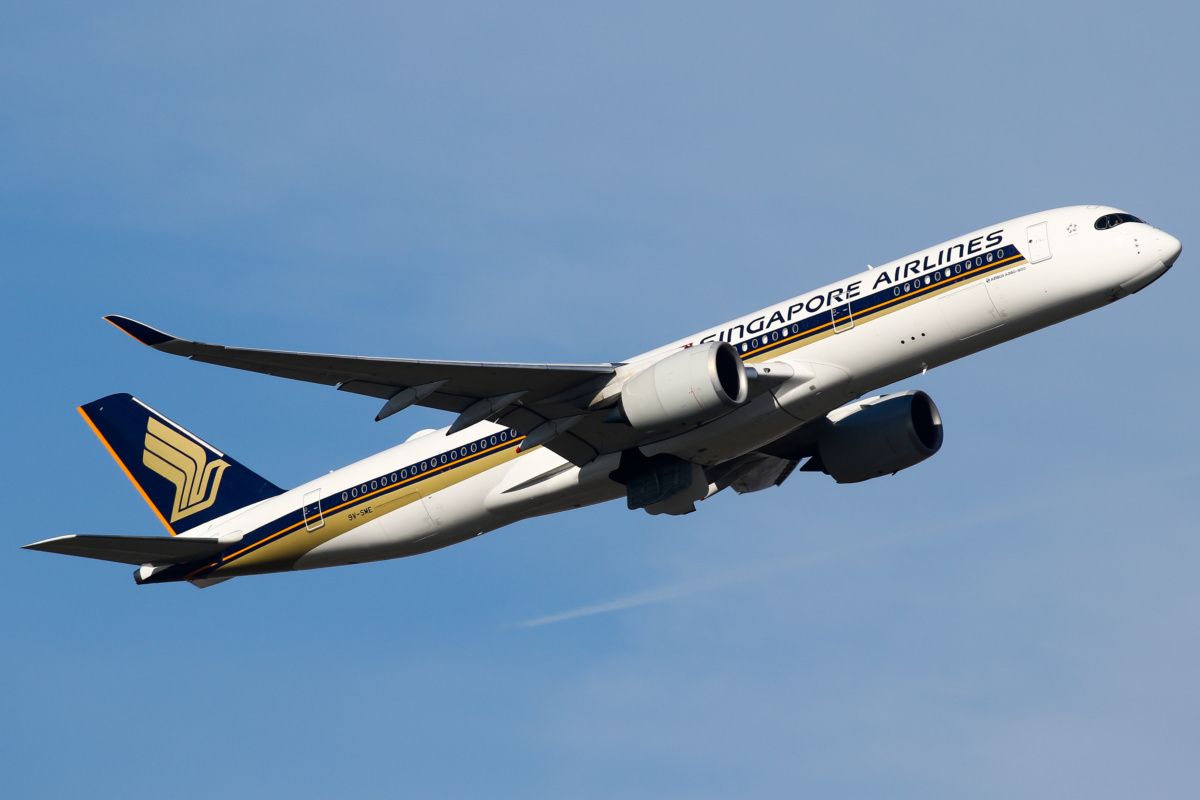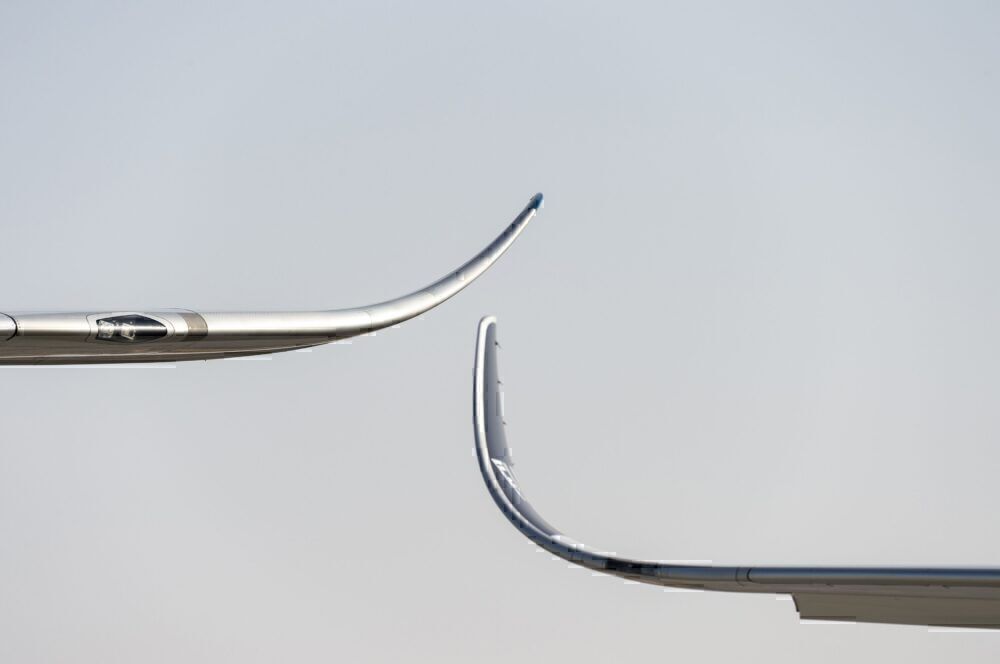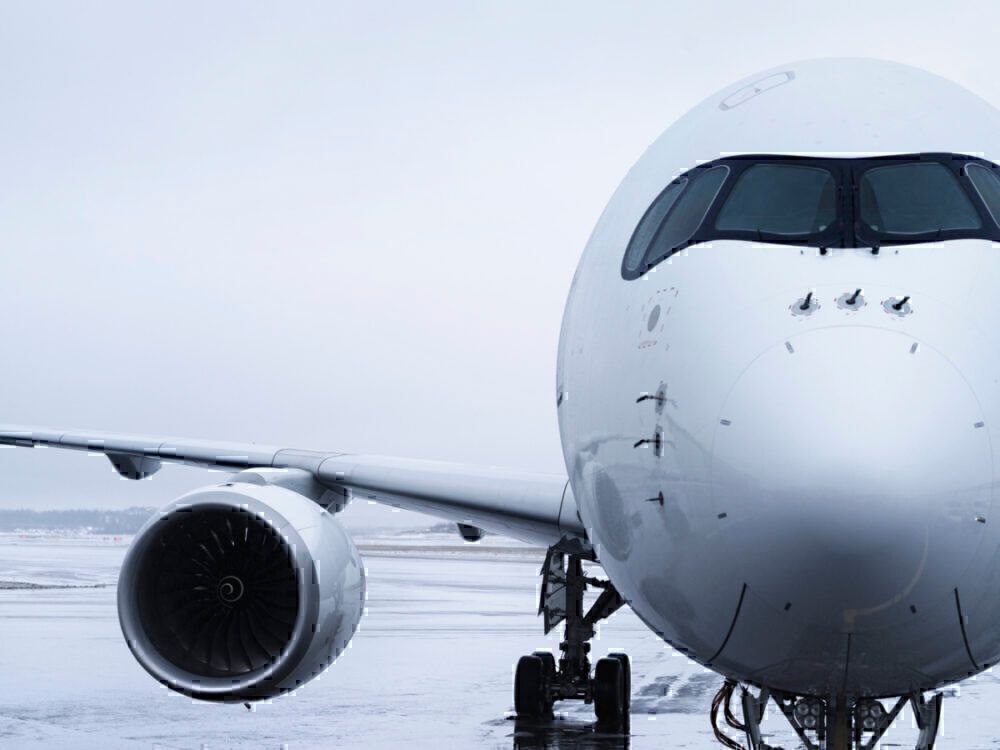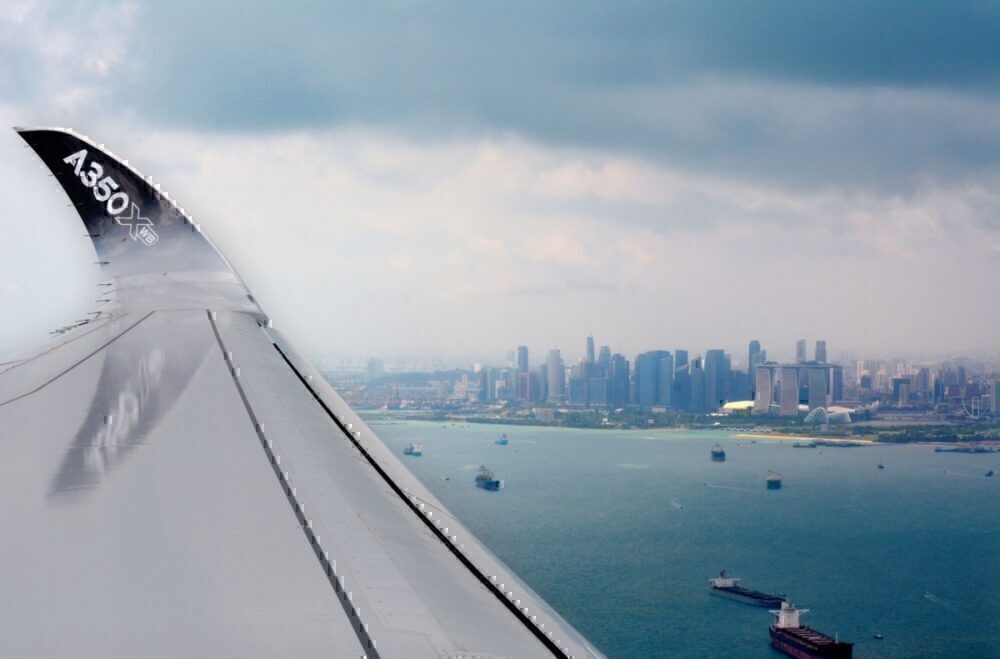The Airbus A350 is immediately distinguished by its striking curved wingtips. These wingtips curve upwards to give the plane's wings their unique appearance. But why exactly does the Airbus A350 have these curved wingtips?
Wingtips enable more cost-efficient flights
The primary purpose of attaching wingtips to a plane is to cut down on operating costs. Wingtips reduce vortex drag caused by the convergence of high-pressure and low-pressure air at the tip of its wings. As vortices form at the wing's edge, they create a drag force that significantly slows the aircraft down. This drag can force a plane to burn a lot more fuel than it needs, while an aircraft's operating range is also shortened as a result.
Winglets come in a variety of shapes and sizes depending on the aircraft. The Airbus A350 uses a blended winglet design, much like the manufacturer's 'sharklets' fitted to the A320. The design involves an upward curve at the tip of the wing, creating a smoother curve than an angular design. According to Aviation Partners, one of the founders of the technology, the design,
"... has a large radius and is designed with a smooth chord variation in the transition area where the wing joins the winglet. This allows optimum aerodynamic loading and avoids vortex concentrations that produce drag."
Stay informed: Sign up for our daily aviation news digest.
The development of Airbus winglets
As winglets became more of a mainstay in aircraft design, Airbus began their own experiments at the turn of the millennium. By 2011, Airbus rolled out its new sharklets but was swiftly met with a lawsuit by Aviation Partners. The sharklet design was based on earlier blended winglet models from Aviation Partners, who were later paid an undisclosed settlement fee by Airbus.
The standard curved wingtips on the A350 work much like the better-known sharklets on the A320. In 2017, Airbus began testing extended sharklets designed specifically for the A350. These sharklets would extend the wingspan of the aircraft and improve its fuel-efficiency and range.
Are curved wingtips better than other types?
How effective wingtips are depends heavily on the plane itself. Attaching wingtips is optional for many aircraft and will be done only if considered economical in the long-term. Often the costs of fitting wingtips will outweigh the projected savings, so many planes simply do without. However, multiple studies have concluded that wingtips are effective at conserving fuel, with NASA claiming they save the industry billions of dollars each year.
Curved wingtips can offer a higher level of wing flex, allowing it to adapt to changing air pressure levels. According to Boeing, the curved wings on the 787 "automatically adjust upward and downward to continually optimize the camber for maximum efficiency." Other types of winglets include the split scimitar winglet, which is commonly found on Boeing 737 planes.
What do you make of Airbus' curved wingtips and sharklets? Let us know in the comments.




